According to scientists, the eyes of animals evolved about 540 million years ago as simple light detection organs. Today, vision is the most important sense for many species, including humans, and has become incredibly diverse and complex. Let’s take a look at some of the most extraordinary eyes in the animal kingdom with Techno World.
Tarsier
The Tarsier is a tiny nocturnal primate (about the size of a squirrel) found in the tropical forests of Southeast Asia. This is the only entirely carnivorous animal in the world. They eat lizards, insects, and even catch flying birds. However, the most remarkable feature of the Tarsier is its enormous eyes, which are the largest relative to body size among mammals. If your eyes were proportional to your body like this monkey, they would be the size of a grapefruit.
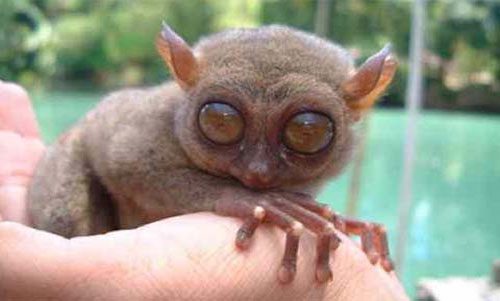
The large eyes of the Tarsier are fixed in the skull and cannot rotate in their sockets. To compensate, Tarsiers have an extremely flexible neck that can turn 180 degrees, like an owl, to detect potential prey or dangerous predators. With each eye weighing more than their brain, Tarsiers have extremely sharp vision and excellent night vision. They are even thought to be able to see ultraviolet light. However, Tarsiers appear to have poor color vision, similar to many other nocturnal animals, including domestic cats and owls.
Chameleon
Chameleons are famous for their ability to change color—a skill that helps them communicate and express intentions or moods to other chameleons (only a few species use color change for camouflage). These lizards also possess incredibly unusual eyes. Their upper and lower eyelids are fused together and cover almost the entire eyeball, leaving only a small hole for vision. Each eye can move completely independently of the other, allowing chameleons to track prey while keeping an eye out for potential threats simultaneously. This also means chameleons have a nearly 360-degree field of view.
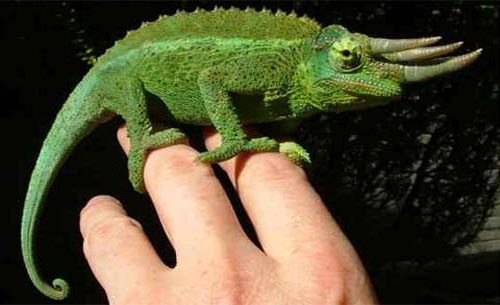
When a chameleon spots potential prey (usually insects, although the largest chameleon species have been known to swallow mice and other small vertebrates), they focus both eyes in the same direction to achieve stereoscopic vision—this is crucial considering that chameleons catch prey by rapidly shooting out their tongues, a technique that requires extremely accurate distance and depth assessment.
Chameleons have very sharp vision. They can spot an insect from several meters away. Like Tarsiers, chameleons can also see ultraviolet light.
Dragonfly
The dragonfly, an insect classified as one of the most formidable aerial predators, is also endowed with “super eyes” in the animal kingdom. The dragonfly’s eyes are so large that they cover almost its entire head, giving this insect a helmet-like appearance. Like chameleons, dragonflies also have a 360-degree field of view. Each of their eyes is made up of 30,000 visual units called ommatidia, each containing a lens and numerous light-sensitive cells. The vision of dragonflies is truly remarkable. They can detect colors and polarized light and are particularly sensitive to movement, allowing them to quickly identify any potential prey or threats.
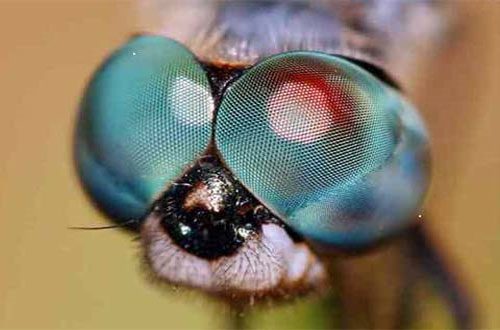
Some species of dragonflies that hunt during twilight can see well in low light conditions when humans can barely see anything. Not only that, dragonflies also have three smaller eyes called ocelli, capable of detecting movement faster than their large compound eyes. These ocelli quickly send visual information to the dragonfly’s motor nerve centers, allowing them to react in a fraction of a second. Although dragonflies are not the only insects with ocelli (some species of wasps and flies also possess this feature), they have the most developed ocelli.
Leaf-Tailed Gecko
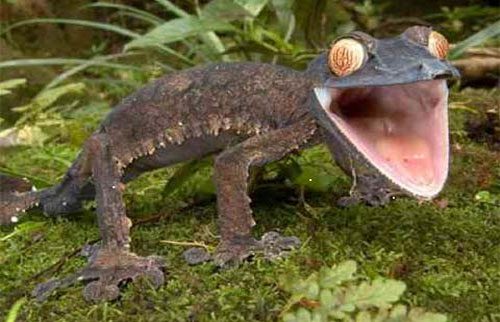
The Leaf-Tailed Gecko has surreal-looking eyes, with vertical pupils and numerous “pinhole” openings that expand at night, allowing them to capture as much light as possible. These eyes also have more light-sensitive cells compared to human eyes, giving the Leaf-Tailed Gecko the ability to detect objects and see colors at night. To give you an idea of the Gecko’s remarkable night vision, remember that while cats and sharks can see up to 6 and 10 times better than humans, the Leaf-Tailed Gecko and other nocturnal gecko species have sharp vision up to 350 times better than ours in dim light conditions.
The Leaf-Tailed Gecko also has a variety of strange and complex eye patterns that help it camouflage. Additionally, this species lacks eyelids. Their eyes are protected by a transparent membrane. It is often observed that geckos clean this protective membrane with their tongues.
Colossal Squid
The Colossal Squid is the largest invertebrate known to science. They also possess the largest eyes in the animal kingdom. Each eye of the Colossal Squid can reach a diameter of up to 30 cm and contains a lens the size of an orange. These “huge” eyes allow the squid to observe in low-light conditions, which is very useful for an animal that spends most of its time hunting at depths of 2,000 meters below the ocean’s surface.
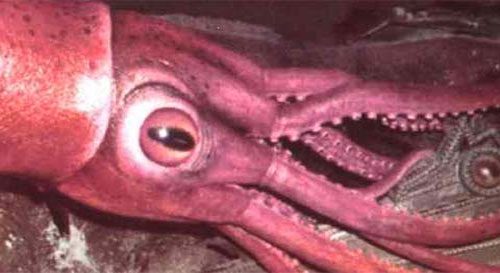
So far, humans have only captured and studied juvenile Colossal Squids. A fully grown Colossal Squid can reach lengths of up to 15 meters. These enormous creatures are sure to have larger eyes. Unlike the Giant Squid, the Colossal Squid has stereoscopic vision, with better distance assessment capabilities. Even more astonishing, each eye of the Colossal Squid has an internal “spotlight,” an organ that can produce light whenever they focus their eyes forward to observe prey in the dark.
Four-Eyed Fish
Found in Mexico, Central America, and North and South America, this small fish measures approximately 32 cm in length and typically inhabits freshwater or brackish water (although they have also been seen in coastal areas). The diet of the four-eyed fish primarily consists of insects, so they spend most of their time swimming on the water’s surface. Despite its name, the four-eyed fish actually has only two eyes. However, each eye is divided by a strip of tissue, and each half-eye has its own pupil.
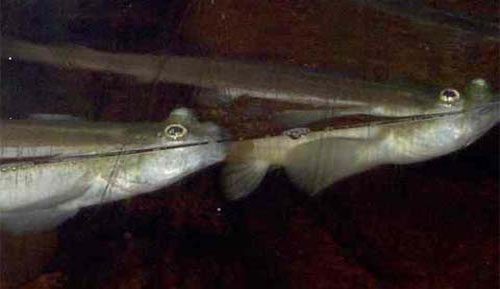
This peculiar adaptation allows the four-eyed fish to see perfectly both above and below the water simultaneously, detecting both prey and predators. The upper half of the eyeball is suited for viewing in air, while the lower half adapts to observing underwater. Although both halves of this fish’s eyes use a single lens, the thickness and curvature of the lens differ between the upper and lower halves, helping them adjust to different light properties in air and underwater. This means that when the four-eyed fish dives underwater, they do not focus their vision with the upper halves of their eyes. However, four-eyed fish primarily live on the water’s surface and only occasionally need to dive to prevent dehydration of the upper halves of their eyes.
Cuttlefish
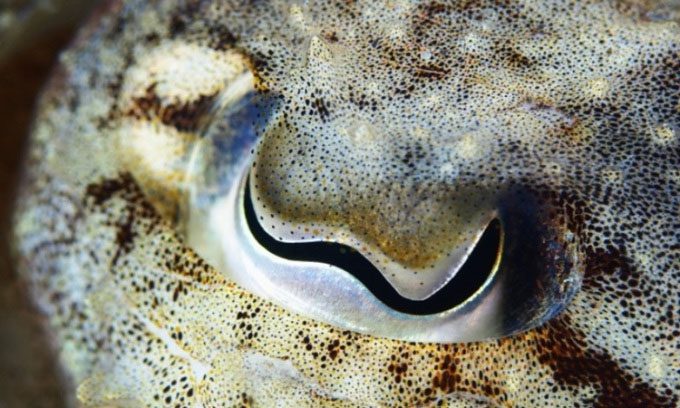
Cuttlefish Eyes. (Photo: A. Martin UW Photography).
No animal has a pupil quite like that of the giant squid. Its pupil is shaped like a W, a characteristic that biologists believe helps the creature maintain balance in unstable light conditions, which are quite common in the deep-sea environments they inhabit. The giant squid possesses only one type of photoreceptor, meaning they can only perceive monochromatic colors. However, the wide pupil of the giant squid and many other cephalopods may promote a completely different way of seeing color, depending on how light passes through the lens and splits into a rainbow.
While this may create a blurred image, the blurriness is color-dependent. The giant squid can see colors that humans may not even be aware of. This ability allows them to adjust their body color according to their environment for camouflage. Unlike many other cephalopods, the eyes of the giant squid can rotate, enabling them to observe the world in three dimensions.


















































